Here’s the problem:
People write about pages that are about them.
It seems like the obvious thing to do, right?
Wrong.
About pages should be used to tell stories, engage the reader, and relate to their experiences.
They are one of the most important components of good website copywriting.
It’s all too easy to write a generic and vague about page that bores your customers faster than grade 9 English class.
That’s why I’m going to help you today. Ahead are the strategies you need to use for writing about pages, along with templates, and examples.
Talk about what’s in it for them
Let me ask you something.
When you visit a website or walk into a physical store, do you think to yourself “Wow, I can’t wait to learn about the history and all of the details of this business.”?
No.
It’s usually something like “Where’s the coupons!?” or “What sales are going on?”
I’m exaggerating a little bit, but the idea is that consumers are usually thinking about themselves while shopping or visiting a website.
Sure, they want to learn about your brand to be able to trust you, but that’s about it.
This is why you need to ensure that an about page details how the customer is going to benefit by working with or purchasing your product.
Look at Shopify, for example.
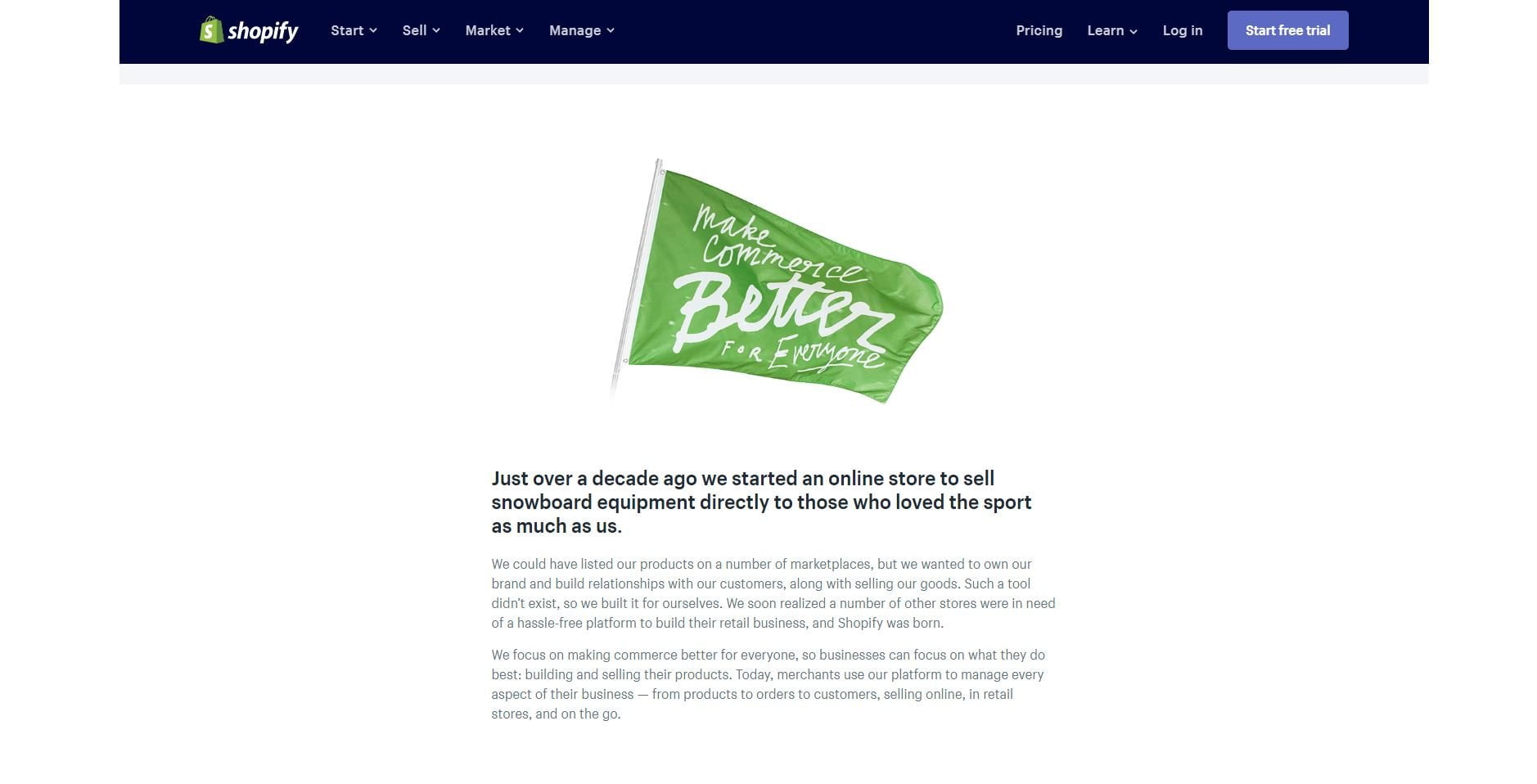
Not only do they do an excellent job at storytelling, but directly state how they help their customers by saying:
We focus on making commerce better for everyone, so businesses can focus on what they do best: building and selling their products. Today, merchants use our platform to manage every aspect of their business — from products to orders to customers, selling online, in retail stores, and on the go.
They could’ve said “We’re an e-commerce platform that does blah, blah, blah” but instead elaborated on the exact benefits users experience by paying for their platform.
Ask yourself what customers are truly getting of your business. Are you educating them to make more money through courses? Do you help them generate leads through content writing services like me?
If you’re learning how to write an about page for a website, this is one of the most essential steps you need to take.
Tell a story
Storytelling is a powerful way to connect to an audience, bring out their emotions, and capture their attention.
This is because stories are universal.
Not everyone can understand technical jargon and data, but a human can relate to a good story.
From our days of painting on cave walls and hunting buffalo to our advanced society today, stories have been used since the dawn of time.
Make sure to read my article on David Ogilvy’s copywriting strategies to learn more about this technique.
Remember that when you’re writing copy, you are typically trying to connect with the primal side of your customers, which is exactly what stories do.
Now, there a few different ways to approach storytelling while writing an about page. The first of which, as you could presume, is to tell the story of your brand.
Did you face hardship and struggle while building it? Are there any interesting experiences that stand out? More importantly, is there anything you can share that the audience will relate to?
If so, base your about page on that. Check out Rolex for inspiration.

They have eight chapters detailing how the company began from its roots in Bavaria during 1881.
It covers the personal story of a man named Hans Wilsdorf, who is the genius behind the famous Rolex crown logo.
The story touches on his personal, family, and career life, all while interweaving the brand’s products and values.
I would argue that this is the second most important about us page copywriting principle.
What makes you different?
A unique value proposition is needed more than ever these days.
New businesses are popping up like flies in the summer, and you need to have something that makes you different if you want to succeed.
This is why I recommend that no matter how you decide to write your about page, that you always include a clear UVP.
It’s common for consumers to visit several different brands before they make a purchasing decision. Just look at the typical buyer’s journey to understand.
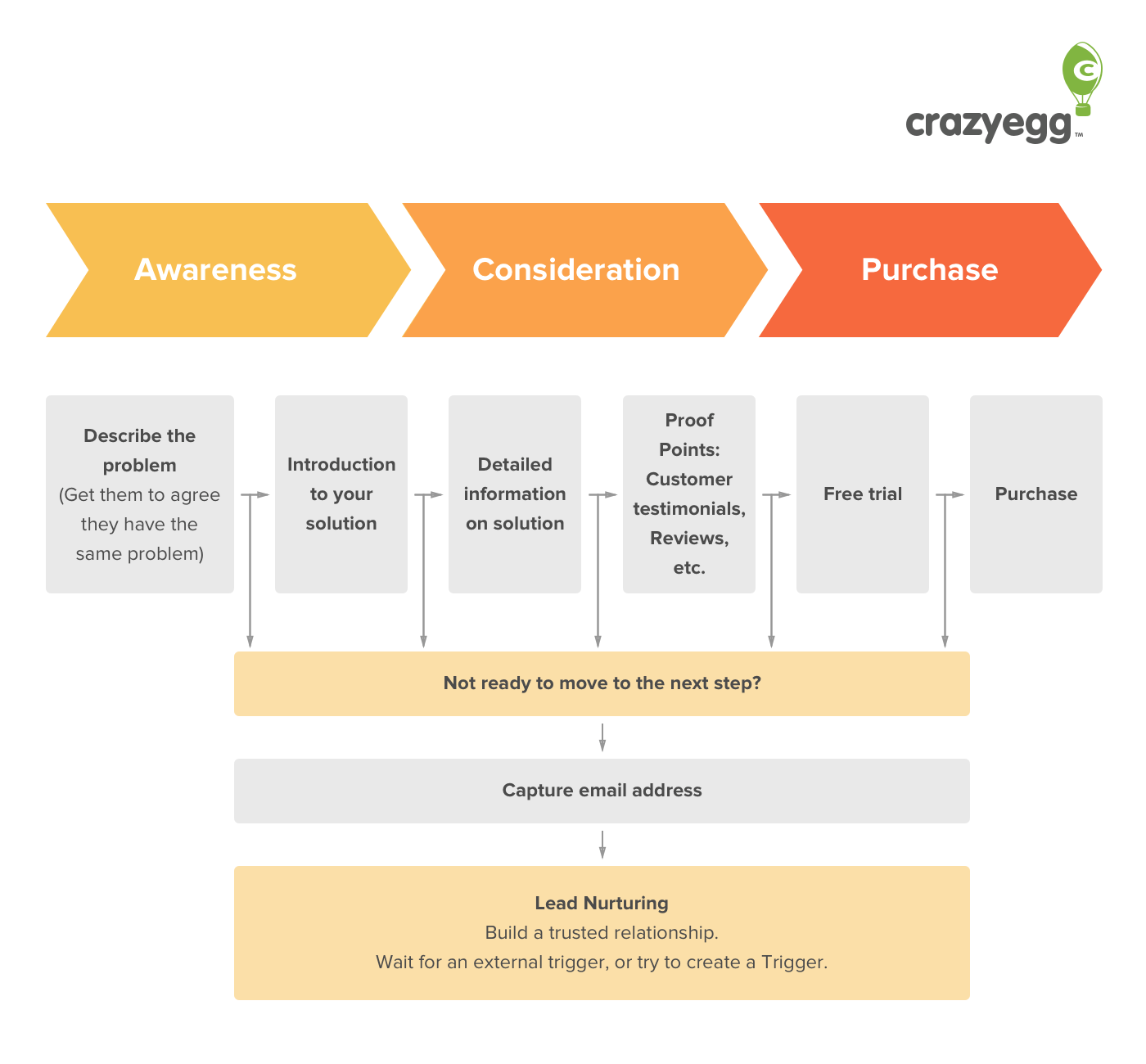
I thought Magento did a great job of using this approach.
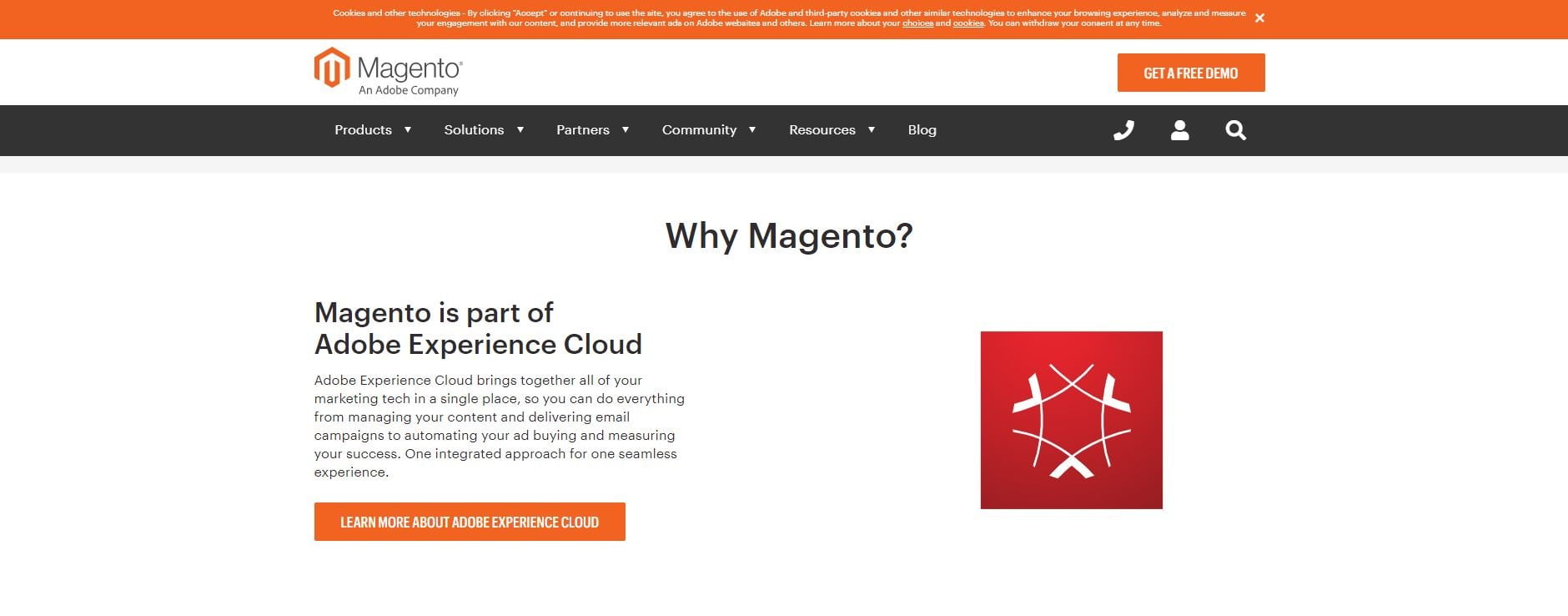
A large component of their about page speaks about how they’re one of the only e-commerce platforms to be integrated with Cloud.
Furthermore, they also use the strategy of explaining how this benefits the user by saying:
Adobe Experience Cloud brings together all of your marketing tech in a single place, so you can do everything from managing your content and delivering email campaigns to automating your ad buying and measuring your success. One integrated approach for one seamless experience.
If you have proprietary technology, unique features, or something that makes you stand out, make sure it’s well known on your about page.
Interweave testimonials
Did you know that 85% of consumers read up to ten reviews before purchasing from a business?
They have all of the resources and information in their fingertips these days to make an informed decision.
This is why adding testimonials to an about page can be a serious conversion booster.
Continuing off of the Magento example I touched on, they also directly link to case studies of brands they’ve helped grow.
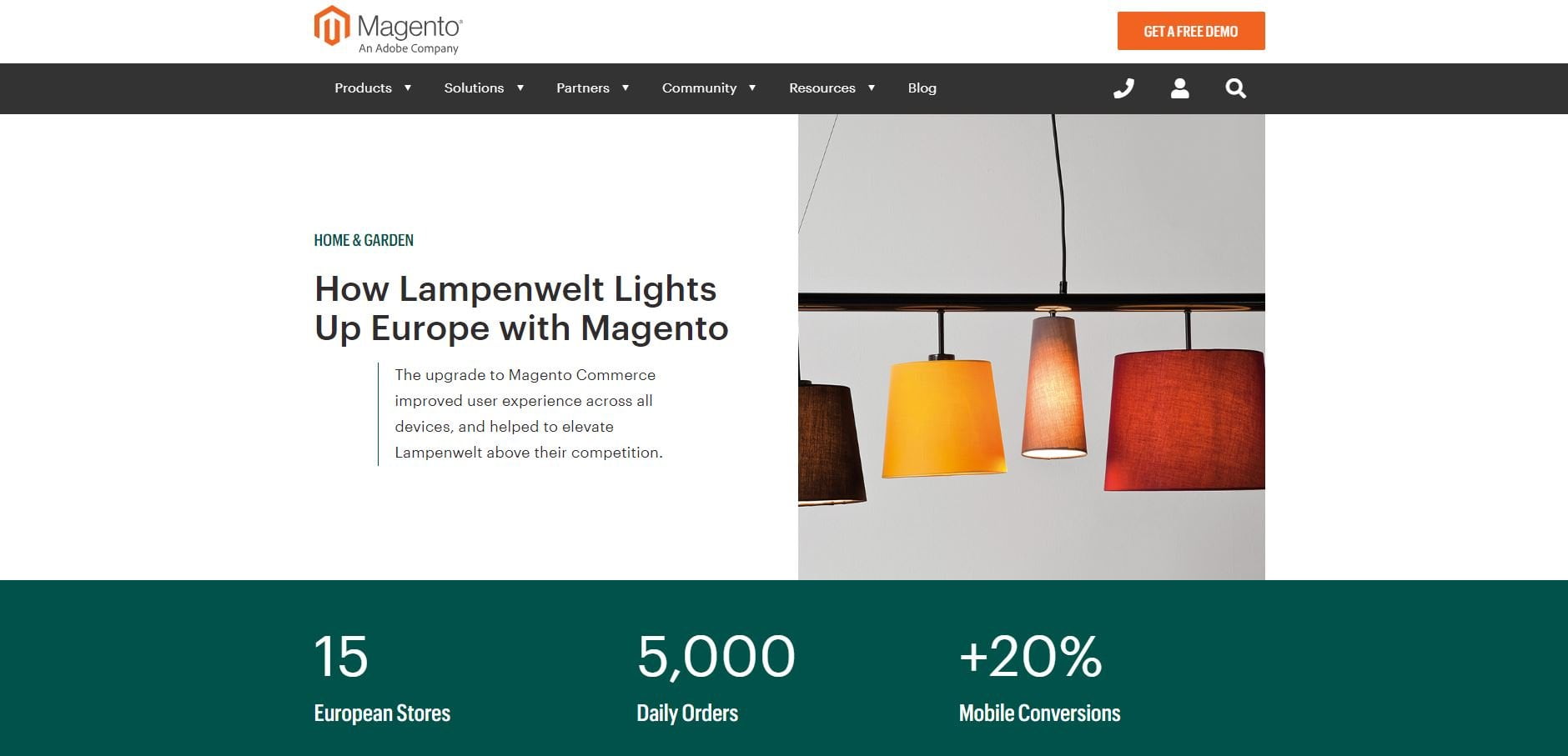
This is one of a lamp company in which they assisted them in growing to 15 locations, 5,000 daily orders, while also increasing mobile conversions by 20%.
If you don’t have case studies on hand, personal reviews and testimonials can work just as well. I’d recommend asking previous customers for a testimonial, as you’d be surprised how many would happily give one.
Show your face
We’re human.
And that means we want to interact with one another on a deep primal level.
Showing your face, even for a brief moment, displays to customers that you’re not afraid to be in the limelight.
This holds you responsible and accountable for the business, improving trust and transparency.
I love how Hubspot does this. They feature both the co-founders with a nice quote.

In fact, this idea is nothing new. There was a study performed in 2013 in the Journal of Personal Selling & Sales Management that proposes human-driven interaction being the future of business.
We have all of the technology, analytics, and tools are our disposal. That’s only going to keep improving.
But, we can’t forget to refine the human element in our sales and marketing.
November 2019 update: I recently attended a Tony Robbins seminar where public speaker JT Foxx did a presentation. He mentioned that we all have a personal brand and company brand. No matter what you sell through your company, you can always mix yourself into the branding for that human aspect.
About page examples
Let’s breakdown some about us page examples and learn from the strategies they deploy to use yourself.
Salesforce
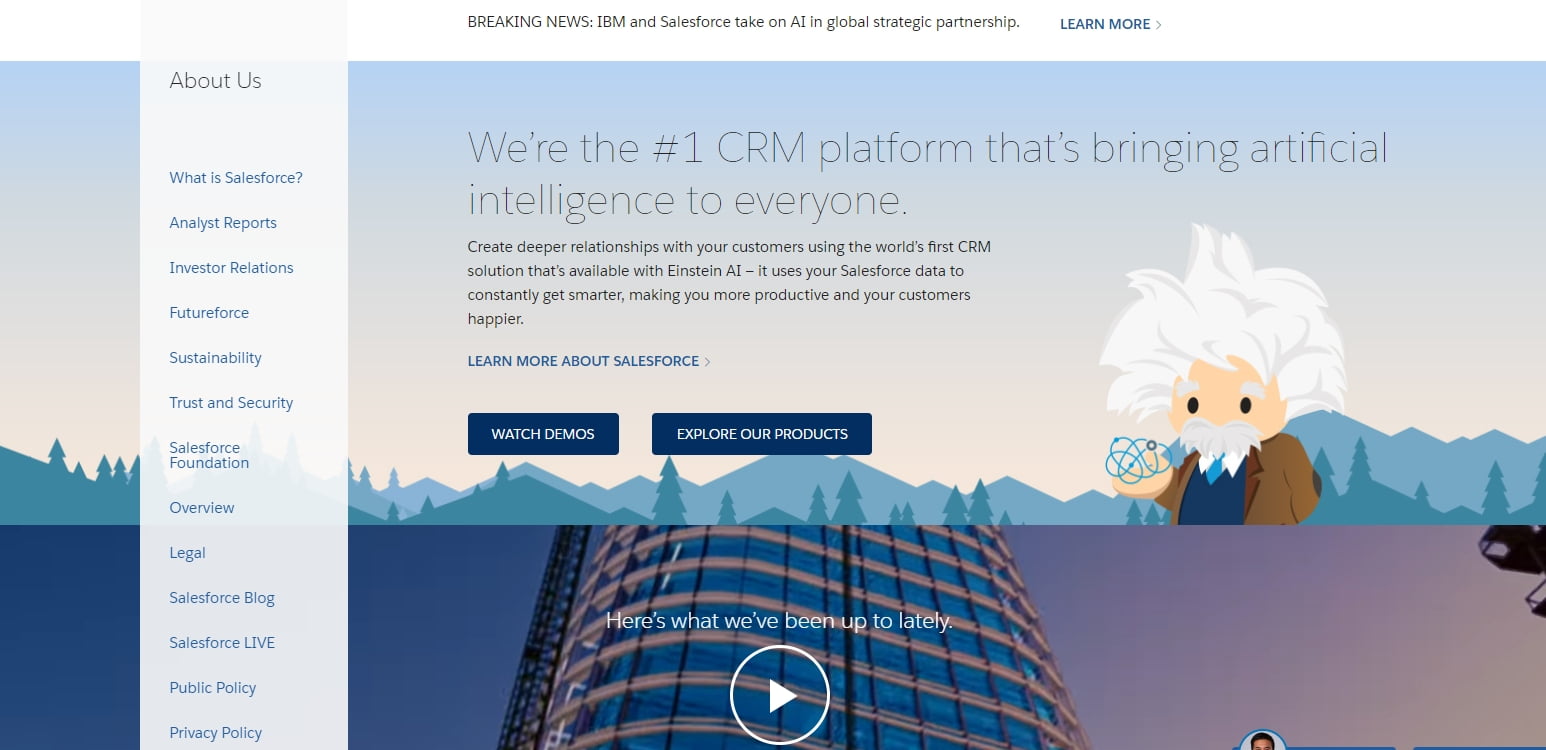
Salesforce is a CRM company and they are a great example of how to make a unique about page that builds trust with customers.
The first thing you’ll notice is that they use videos. This is used to showcase the company’s values, history, and ties in their services.
Secondly, note how they have a long navigation on the side. There isn’t just one about page, there’s a dozen!
They have pages that explore their security, legal system, leadership, careers, and more. Consider diving deep into the background of your own company like this.
Forbes

Forbes, A.K.A one of the biggest publications in the world, has one of the most optimized about pages I’ve come across.
It uses a mix of all of the strategies I’ve outlined today in one neat package.
They begin by displaying stats like how many years they’ve been in business, how many users they reach, and the amount of employees that have.
Below is an interactive timeline where you can click through the various eras of the publication.
There is a leadership section that showcases the founder, Mike Federle, along with other important figures that run the business.
Forbes finishes it off with some of the many awards they’ve won, which acts as social proof like testimonials or reviews.
Starbucks
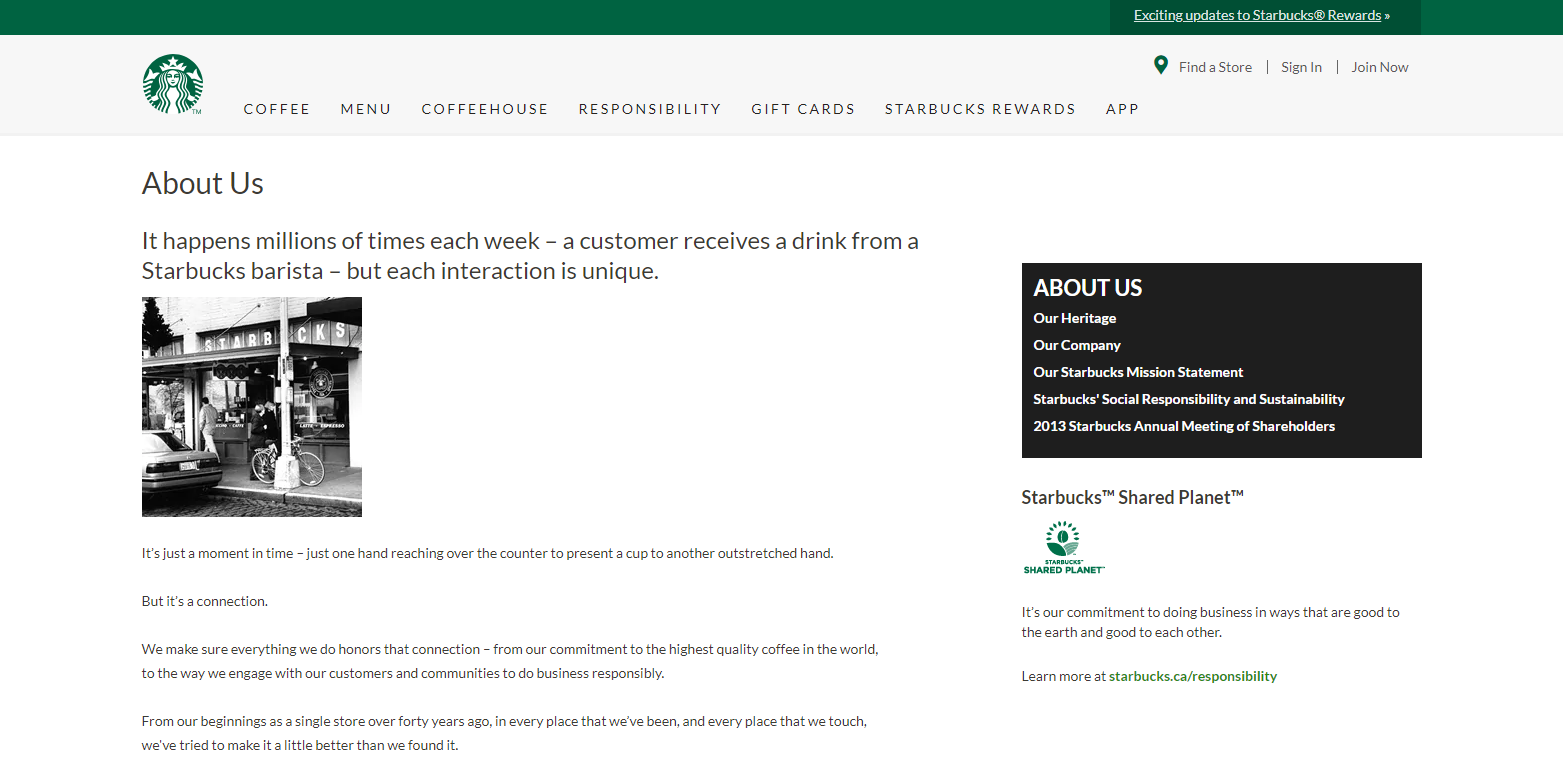
Funny enough, I’m actually writing this article as I’m in a local Starbucks 🙂
I wondered over to their about me page and realized something right away…
It’s short and sweet.
It isn’t thousands of words with videos, case studies, and images.
Do you know why?
Because they don’t have to.
They’re a coffee shop, and there’s not much you need to know besides they make a great cup of Joe and care about their customers, which is exactly what they talk about.
If you don’t have to write more words than necessary, then don’t!
This is a great example of understanding your business and customers, and writing an about page that truly aligns with that.
Tooting my own horn
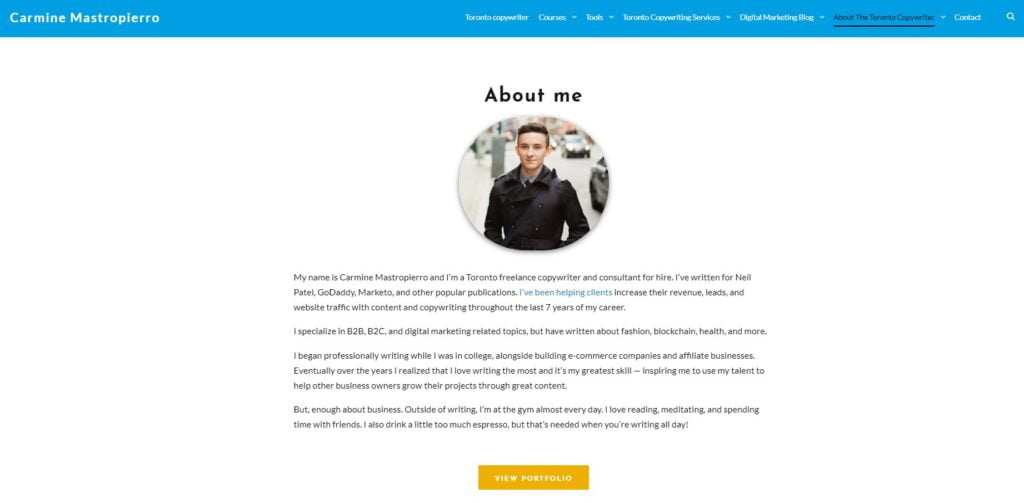
Do you know who has a great about us page? Me 🙂
Heck, I am a copywriter after all!
The goal of my about page was to explain what I do as a copywriter, use social proof, mention the benefits of working with me, and have a call to action.
I begin my about page by explaining how long I’ve been writing and the names of some big-ticket websites I’ve written for. I also state that I increase traffic, leads, and revenue with copywriting because that’s what my clients are really after.
I briefly touch on the history of me as an entrepreneur and what I like to do outside of business near the end. This creates transparency and helps readers have a deeper connection with me.
This is all followed by a bright orange call to action which helps me generate leads.
Also, note that I included an internal link to my services page for SEO purposes.
About page template
Here is a template for about pages that are based on the approaches you learned today. Fill it out in this order or rearrange it how you would like.
- Begin by telling the story of how your business came into fruition. Include as many personal details as you want.
- Include a photo of yourself or other important people that run the business. Feel free to include a biography of these individuals.
- Mention the benefits that customers will experience by working with your business.
- Include testimonials, case studies, reviews, or other forms of social proof.
- Clearly explain your unique value proposition.
Wrapping up about page copywriting
Writing an about page properly is very underrated.
Too many websites have poor about pages that don’t clearly explain what they do, the benefit of choosing them or build any rapport.
You can create an about page that generates leads by following the simple techniques I outlined today.
There’s a reason that Hubspot, Forbes, and some of the biggest companies are all using them.
It’s because they work!
Now that you know how to write an about me page, go to your website and start spicing up your copy!














